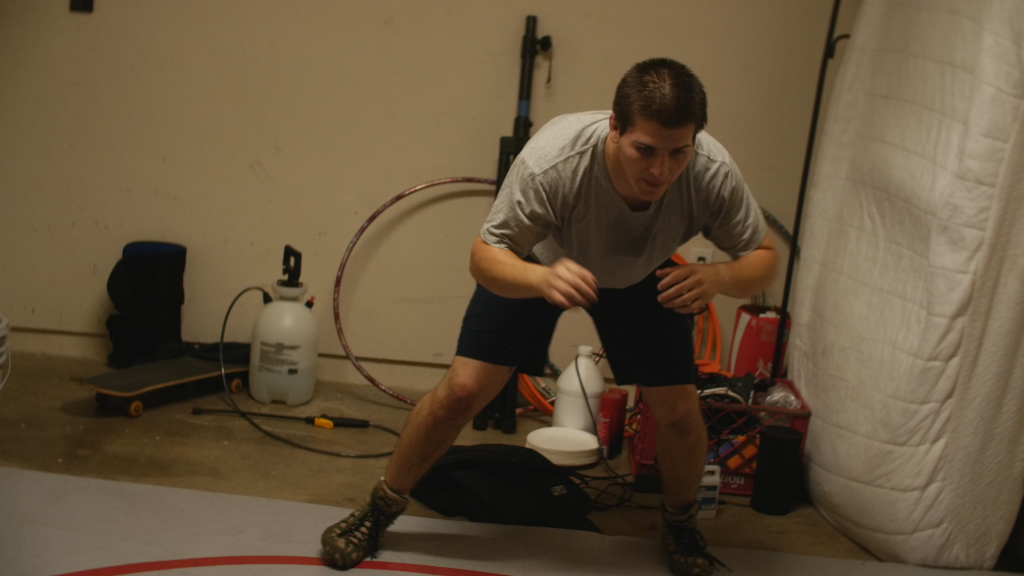You make a film. Export it. And you’re still a little disappointed…
I’ve been here too. Consider the possibility that you still have a lot of growing to do as a filmmaker.
So let’s keep learning together!
One of the reasons why your videos still struggle to connect is due to your subject matter… I’m talking about actors.
Finding actors for your film can be tough. You can have amazing visuals, a great soundtrack, and even a great story.
It’s extremely tough to find great actors for indie film project.
You might be struggling with finding somebody to film at all. I’ve been here too.
“I have a camera but I have nobody to film with it.”
The struggle is real.
So I start shooting and filming random inanimate objects. But this only works so much.
You can only push your story so far filming flowers and cars.
Imagine if it was possible to get as many actors right in front of you.
Now this isn’t the traditional route of getting actors. I’m all for casting and hiring actors with talent – don’t get me wrong.
But consider the possibility that using traditional actors isn’t the only route.
This is a new way to get actors for your film that anybody can utilize.
I’m talking about actors you are able to direct, because they already trust you.
Building trust between you and an actor can take weeks. What if you could cut that down to a few minutes.
This is seriously something I’ve started doing on my own. I’m no expert in it.
But so far it’s worked wonders for me!
Some of you might be doing this already. But here’s the path…
Use non-actors.
Seriously, use your friends.
It sounds silly… but it’s seriously works.
Non-actors typically take better direction then folks who are amateur actors if they know the role they are playing.
Let me give you an example. Recently I started shooting a film about a wrestler.
My friend Jay wrestled for six years in high school. It was his life.
Jay has never done any acting before. But he fits the role perfectly.
I asked him if he wanted to be a part of the film. Of course he said “yes.” We’re buddies.
He has the stance, he has the experience, and he has the moves.

Now he doesn’t have experience delivering dialogue. But the way he looks and the way he moves makes up for that 10x.
Plus… The trust already exist between us. He takes direction from me so easily.
He’s not thinking about some topic he learned an acting class six months ago. He trust me when it comes to directing him as an actor.
I’m not knocking actors by any means.
But I can’t imagine trying to cast an actor that has 6 years wrestling experience and is able to deliver lines like a boss.
So for this project, I’d rather take the 6 years of experience over acting experience.
This is the non-traditional route.
Here are some amazing short films that use non-actors.
The Cage | Filmsupply Originals from Filmsupply on Vimeo.
The Cage – By Ricky Staub
Once, When We Were Young | OFFF MX 2012 from Rob Chiu on Vimeo.
Once, When We Were Young – by Rob Chiu
To learn more about finding in directing not actors, enter your name and email and I’ll send you my guide to finding and directing non-actors that I’m finishing in the next few weeks:


I agree with your approach. Up to the mid-90s I had only used auditions to find actors. Then I got a job producing & directing training videos for the Marine Corps. They had a strict policy of only using Marines as actors. My first thought was to look for non-active duty Marines who were actors. We auditioned a bunch in New York City, but we didn’t find what we needed. I was left with finding active duty Marines who would fit the bill. So we asked our Marine Corps client to choose a number of Marines to audition. I asked the Marines to memorize one page of script and be prepared to read from two more pages. The first pair of Marines (and it turned out all other Marines) hadn’t memorized their lines and, understandably, had no experience reading off the page for an audifion. I was thinking I was toast before a single frame had been shot. Then I had an idea. I knew the Marines were familiar with the story and asked them to role-play the scene. It was almost instantly clear to me which Marines were comfortable in front of the camera. BTW, we had brought our biggest camera to the audition to see who it might spook. In the end I cast Marines who were most comfortable in front of the camera. And I realized later that the Marines had something most actors didn’t. Their culture, perhaps, the most distinct “corporate culture” there is. They brought a believable subtext to every scene. Of course, it took more time to shoot, but in the end, the audience believed the training situations were real. Much as your wrestler knew his role since he lived it, the Marines were compelling characters. For over two decades I’ve been using this approach for my Marine productions v